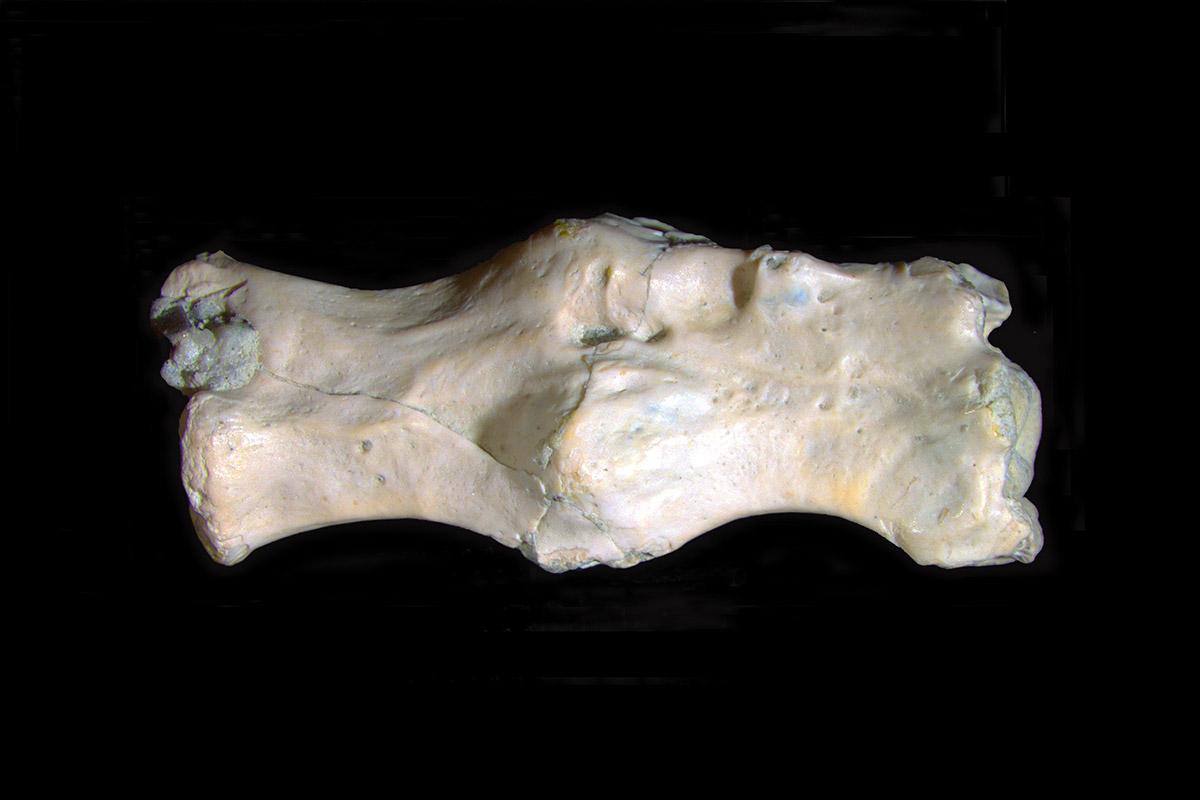A lizard-like animal that lived 289 million years ago in Permian times suffered from a disease of bone metabolism similar to Paget's disease in modern humans. This was published by the researcher Yara Haridy and her colleagues from the Museum für Naturkunde Berlin, the Charité Universitätsmedizin Berlin and the University of Totonto in the open-access journal Plos One. This is by far the oldest known proof of such a disease.
A lizard-like animal that lived 289 million years ago suffered from a bone condition similar to Paget’s disease, according to a study published August 7, 2019 in the open-access journal PLOS ONE by Yara Haridy and colleagues from the Museum für Naturkunde in Berlin, the Charité Hospital in Berlin and the University of Toronto. This is the most ancient known case of such a disease.
The animal in question belonged to an extinct group of lizard-like creatures called varanopids, relatives of the earliest ancestors of mammals or reptiles. The authors identified the disease in an isolated pair of tail vertebrae discovered in an Early Permian cave at Richards Spur, Oklahoma. Micro-CT scanning at the Museum für Naturkunde allowed examination of both the external and internal structure of the elements, revealing that in some places the bone had been thinned by abnormally high levels of reabsorption, while in other areas excessive bone growth had resulted in abnormal bone thickening and the ultimate fusion of the two vertebrae.
According to the researchers, this condition is most similar to Paget’s disease, a bone metabolic disorder marked by a breakdown in communication between bone building cells and bone destroying cells. Paget’s disease is commonly seen today in the hips and vertebrae of humans and has been diagnosed in other living mammals and reptiles as well as one Early Jurassic dinosaur fossil. The disease has been linked to both a genetic factor and measles-like virus, though its precise cause remains controversial.
With only two vertebrae preserved, it is impossible to say how widespread the disease was in this animal’s body. If it was restricted to the tail, the animal may only have suffered minor pain and stiffness. This discovery marks the oldest known occurrence of a Paget-like disease and suggests that susceptibility to such disorders was already present in our early Permian cousins. It is also the by far oldest indirect evidence of virus in earth’s history.
Publikation: Haridy, Y., Witzmann, F., Asbach, P. & Reisz, R. 2019. Permian metabolic bone disease revealed by microCT: Paget’s disease-like pathology in vertebrae of an early amniote. PlosOne.
Pictures:
http://download.naturkundemuseum-berlin.de/presse/PagetVaranopiden
The picture shows two fused tail vertebrae of an early Permian varanopid from Richard’s Spur, Oklahoma, USA. Both the external and internal structure of the bones indicate that the animal suffered from a metabolic bone disease very similar to Paget’s disease in humans.Images are provided by: Yara Haridy/Museum für Naturkunde, Berlin
